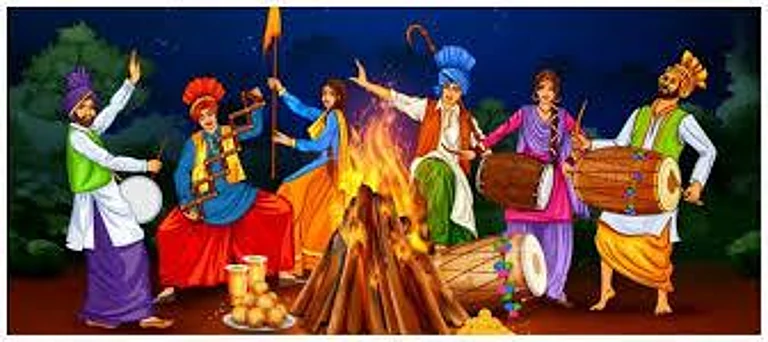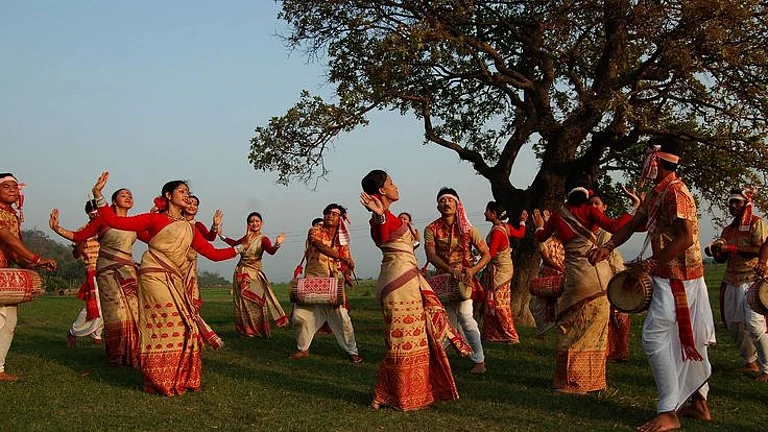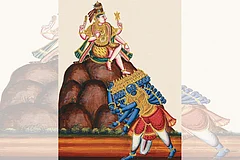Sachin Mahato hails from a family that has been performing Chhau, a major folk dance form of eastern India, for generations. Chhau performers wear traditional masks to enact the roles of characters from myth and folklore. The dance involves acrobatics and dynamic athletic movements. Mahato has been playing Raavan and other Asurs over the years. He spoke to Animikh Chakrabarty about his journey.
How did you become a Chhau dancer? When did it all begin?
I started my journey when I was 14 years old. My father and grandfather were also Chhau dancers. And being in Purulia, which is seeped in the culture of dance, art and traditional masks, I was inspired to be a Chhau dancer too.
Which are some of your favourite roles?
When I was growing up, one of my teachers said that I embody the Asur personality. My physical presence and the hard work I used to do daily made me a good fit to play the role of Asurs. Thus, I was trained mainly in the veer rasa. I started performing the roles of such characters as they require more strength, movement and jumping capabilities. The movements are dynamic and I have trained myself to suit these roles.
What character and story arc does Chhau culture attribute to Raavan?
We mainly portray Raavan in two stories: one, where Raavan arrives to marry Sita, in “haradhanu bhang” (the test set for her suitors). He fails at it and this makes him very angry. I show the arrival of Raavan, portray his rage through various strong, warrior-like movements. His feet hit the floor as if its supposed to collapse under him. It takes a lot of mental preparation to embody the strength and rage of Raavan.
The other story is that of Kumbhakarn and Raavan. When all his soldiers are defeated, Raavan wakes up his brother Kumbhakarn to go to war. Kumbhakaran refuses to join, warns Raavan about his faults, and asks him to give back Sita. Raavan refuses and is eventually killed in the battle with Ram.
How do you prepare yourself for playing such a character?
Raavan was Tripurjayi (the conqueror of the three worlds), and a brave warrior. I have to manifest rage and bravery in myself. It is also a very physical process. The costume contains ten heads and twenty hands. I believe I have to take on the duty of being an immensely strong presence and portray the character in the right way to do him justice. When people say how beautifully the Asur or Raavan have been portrayed in the play, I am filled with pride.
As a performer who embodies the role of Raavan, how do you see him?
For me, Ravaan was a martyr. He was a Shiva devotee and he did everything he could to save his clan, the Rakshasas. He knew that he was supposed to be defeated. Despite being aware of his fate, he did not give up. He did understand that he was battling a god and the outcome, but he was strong enough to fight till his last breath
How do you account for his actions?
It was not his place to choose his actions, but his fate. He was a pawn in the hands of Narayan. In our story, when Lakshmi asks Narayan to show his rageful form (as she couldn’t believe how the benovelent god would have one), Narayan asked his faithfuls, Jay and Vijay, to take on the task of stopping his three sons from seeing him. Enraged by the actions of Jay and Vijay, the sons cursed the two of them to be born as Rakshasas in three births. Raavan and Kumbhakarn were one of their births, and their fate was to be killed by Narayan’s avatar so that he could display his rageful form.
MORE FROM THIS ISSUE
Why do you think Raavan is portrayed as a villian?
We show him as a bad character but it’s on me to make the character likeable and earn him the public’s respect. I want to portray the character with all the nuances: bad and good, fear and valour, weakness and vulnerability, strength and character.
































